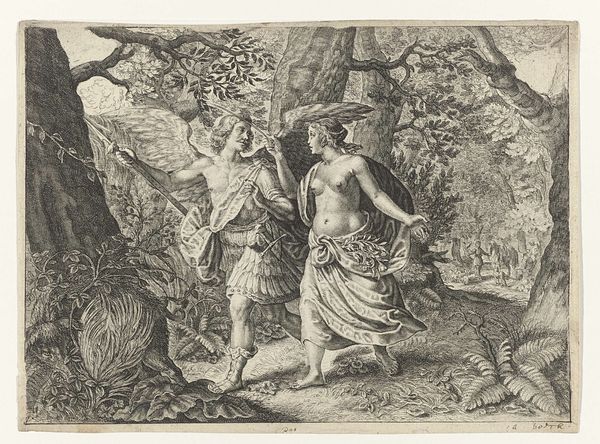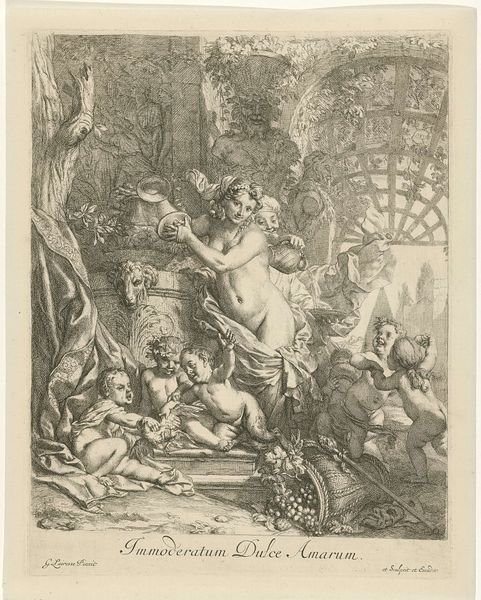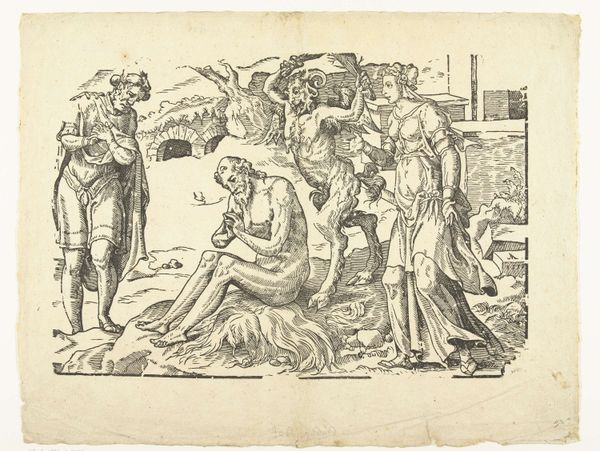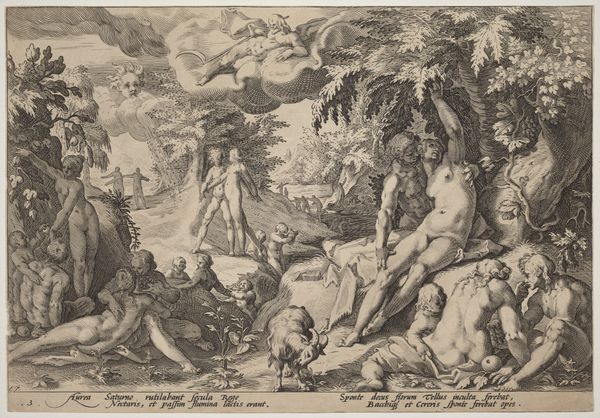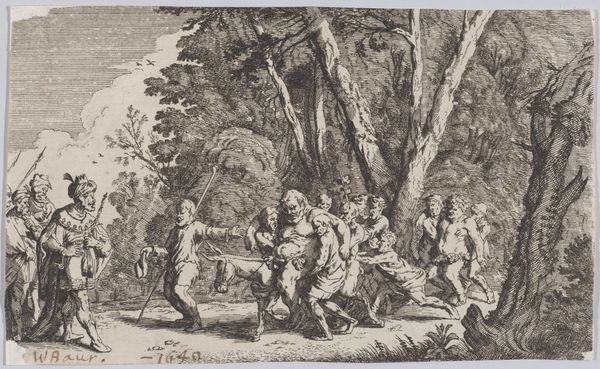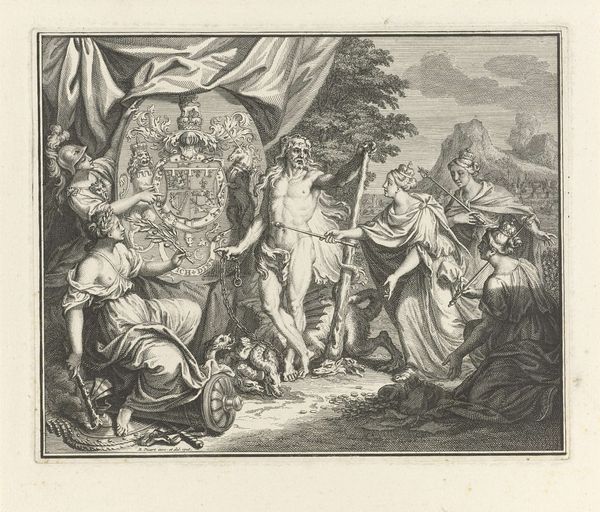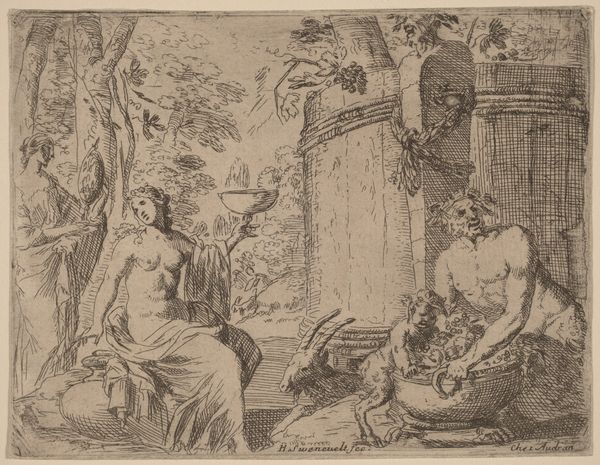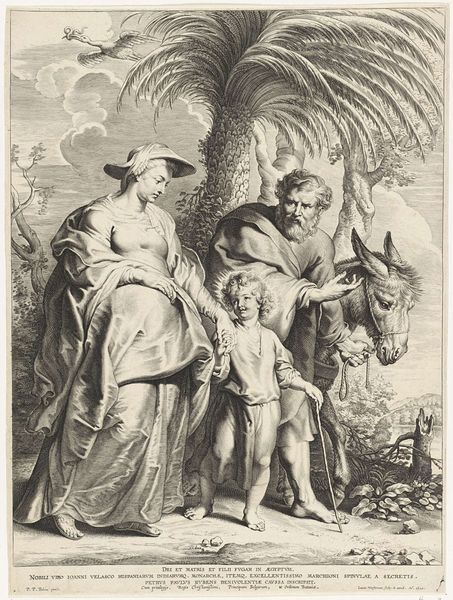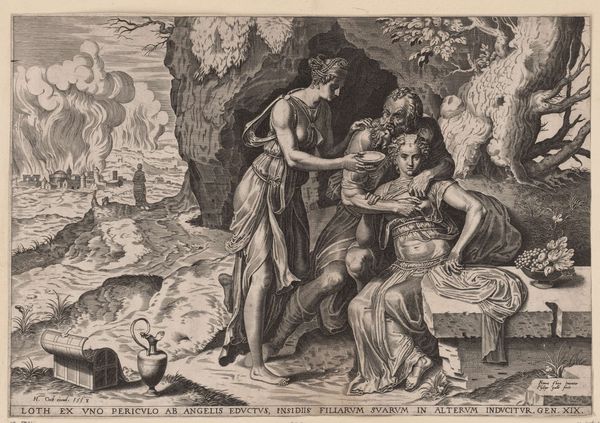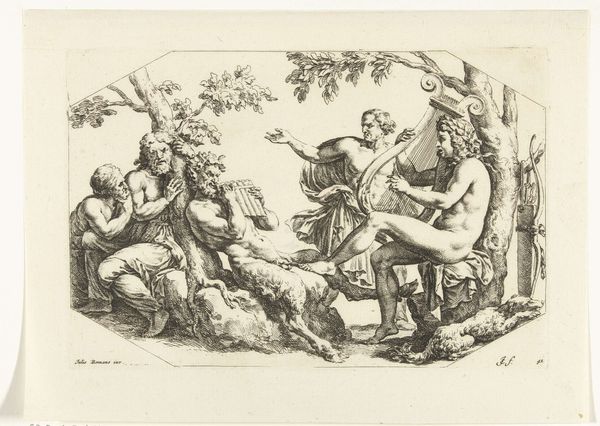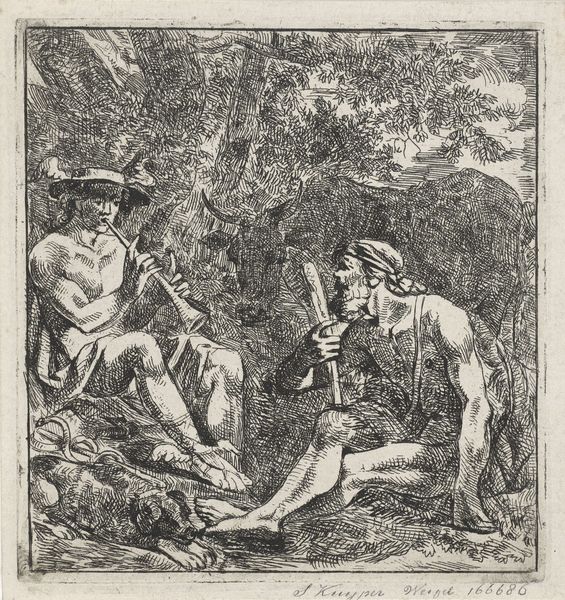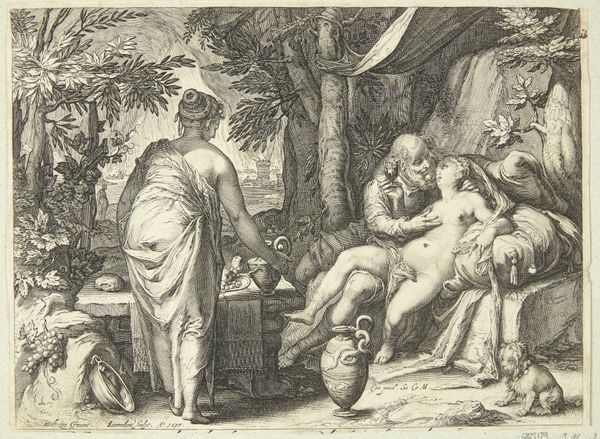
print, engraving
#
allegory
#
baroque
# print
#
figuration
#
history-painting
#
nude
#
engraving
Dimensions: height 171 mm, width 235 mm
Copyright: Rijks Museum: Open Domain
Editor: So, this is "The Wedding of Bacchus and Ariadne," an engraving made around 1636-1670 by Magdalena van de Passe. It has such a festive, almost theatrical quality to it. How do you interpret this work, especially given its heavy use of symbolism? Curator: Ah, a wedding! Consider what it signifies: the culmination of narratives, the blending of identities, a shared destiny—often rendered in visual languages passed down through generations. See how the figures of Bacchus, wreathed in grapes, and Ariadne, regal yet rescued, embody specific concepts of pleasure and deliverance. Note also the satyrs, the leopard; all symbols entwined with themes of abundance and transformation. Editor: So, the visual language really reinforces these established cultural stories? Curator: Precisely! Think of the deeper cultural memory these symbols evoke. Grapes aren't merely fruit; they are emblematic of wine, revelry, and altered states of consciousness, echoing ancient Dionysian rites. Similarly, Ariadne's crown and flowing robe not only portray her noble origin but signify salvation. It raises a fascinating question, though: who is she without her narrative? Who is he? How does a symbol outlive the stories that built it? Editor: That’s really fascinating! It gives me so much to think about regarding how we continually give new meaning to enduring archetypes. Thanks! Curator: Indeed! The power of symbols lies in their adaptability. This work then encourages us to examine our own inherited visual vocabularies, questioning what remains, what evolves, and why.
Comments
No comments
Be the first to comment and join the conversation on the ultimate creative platform.
